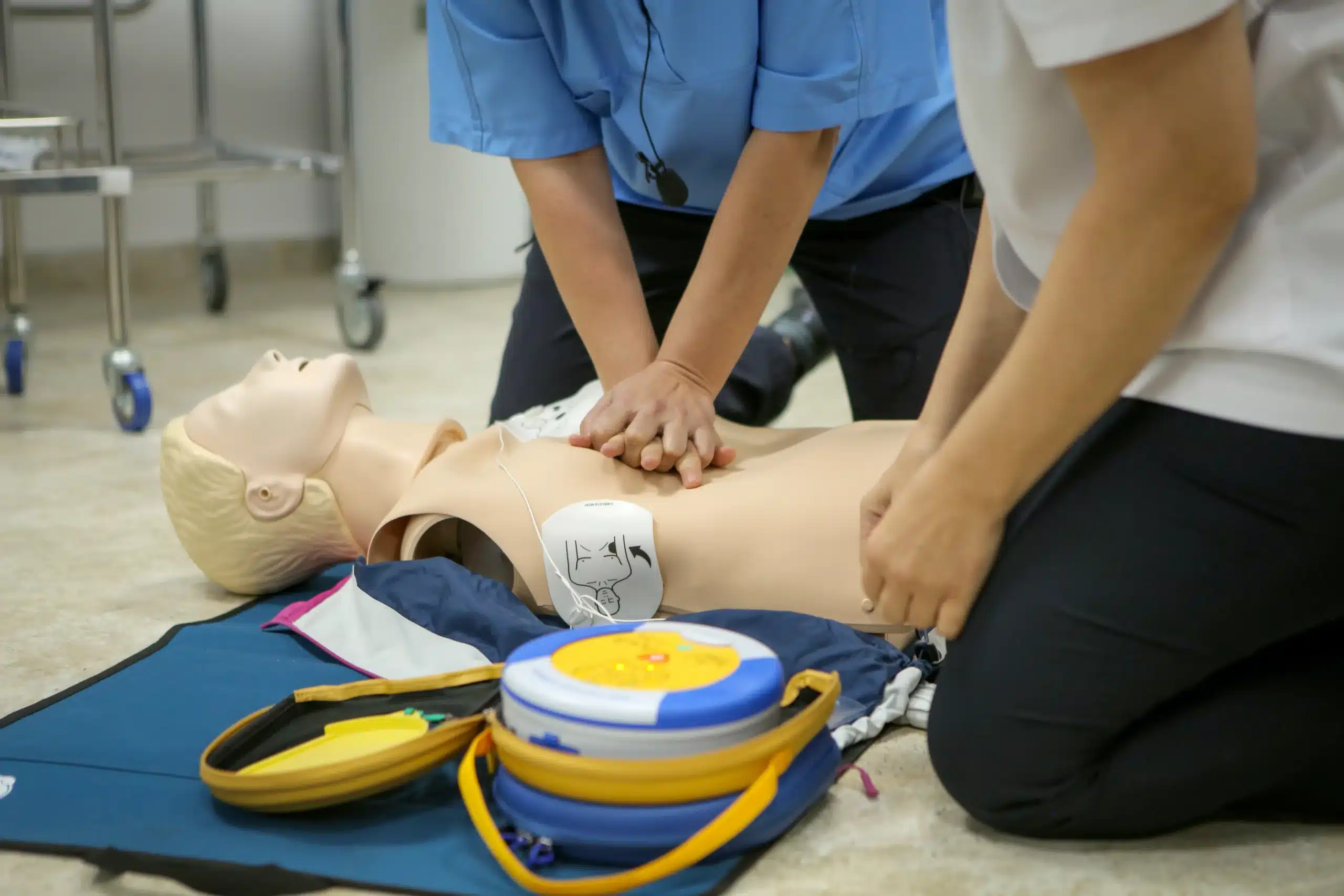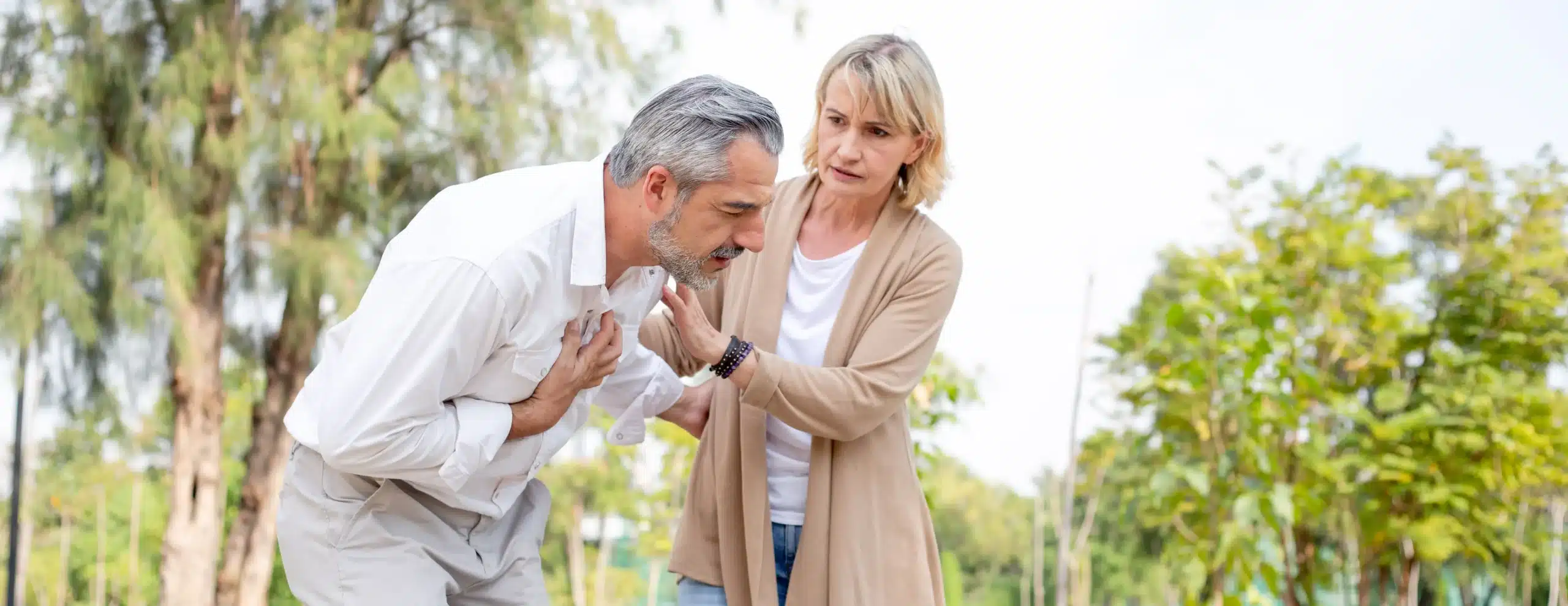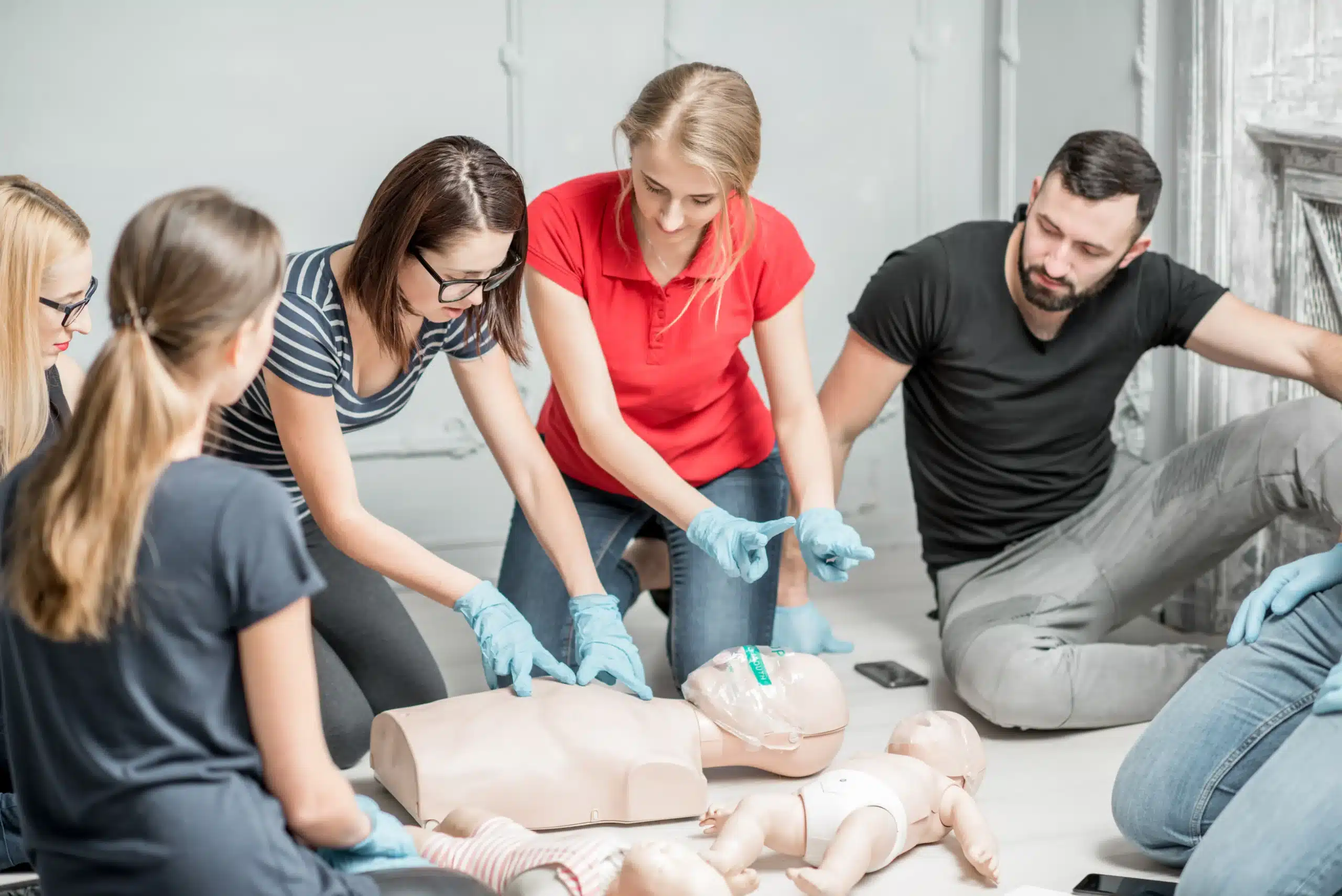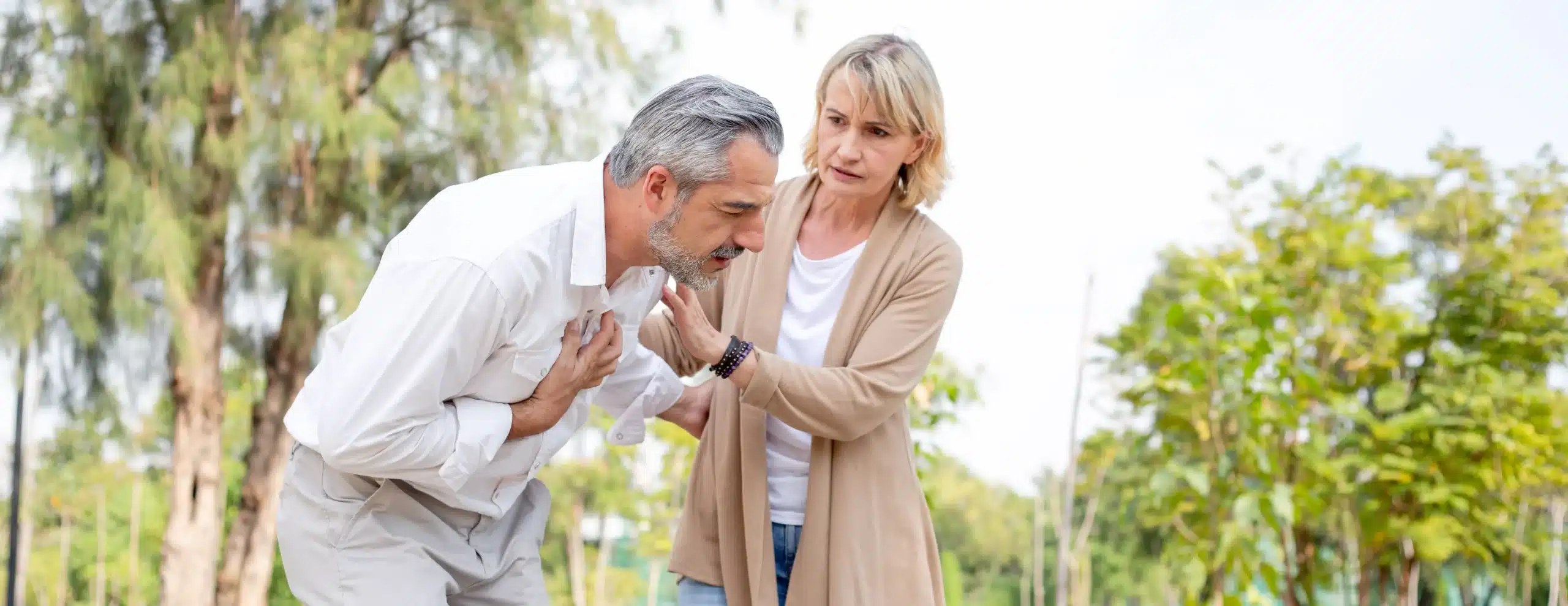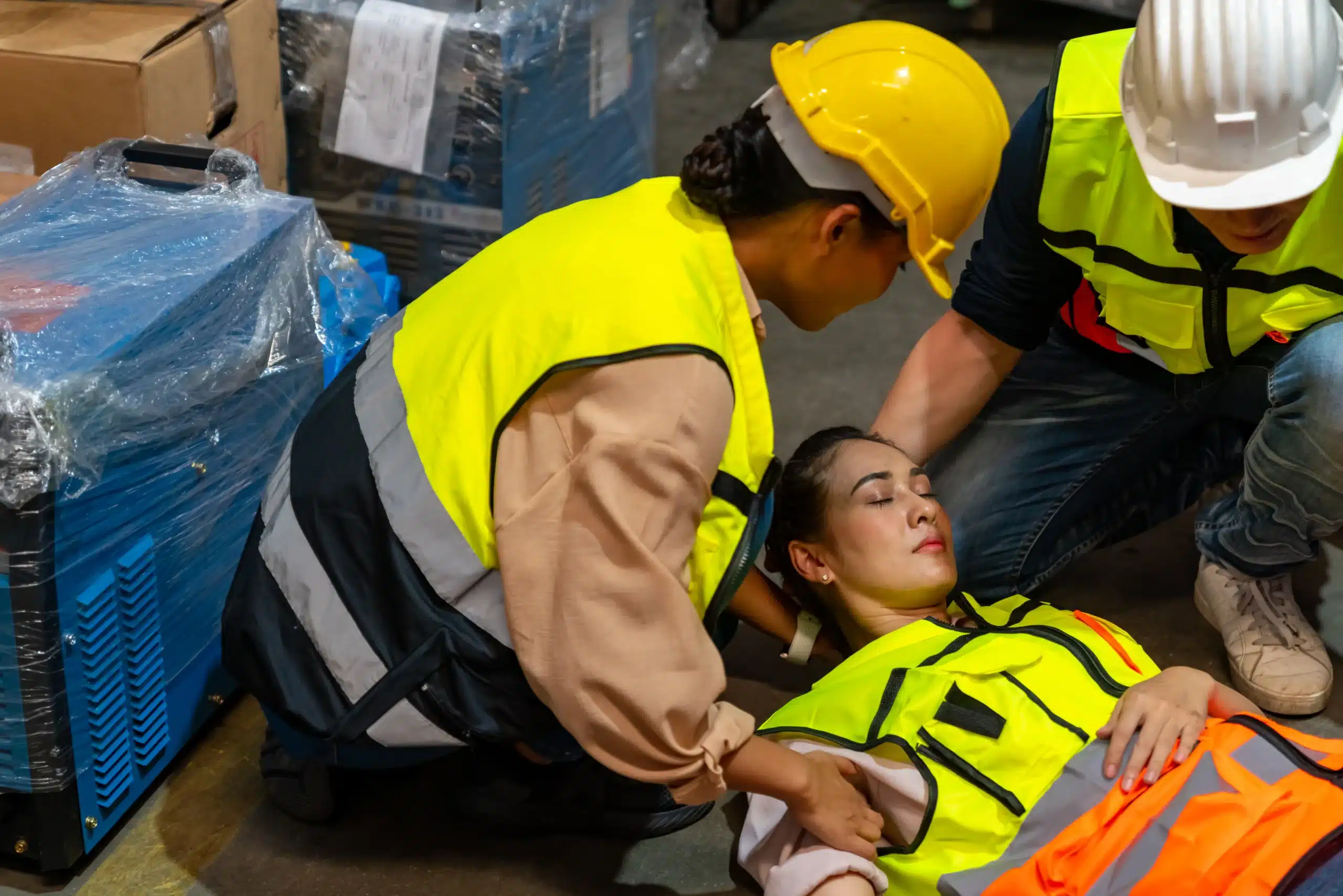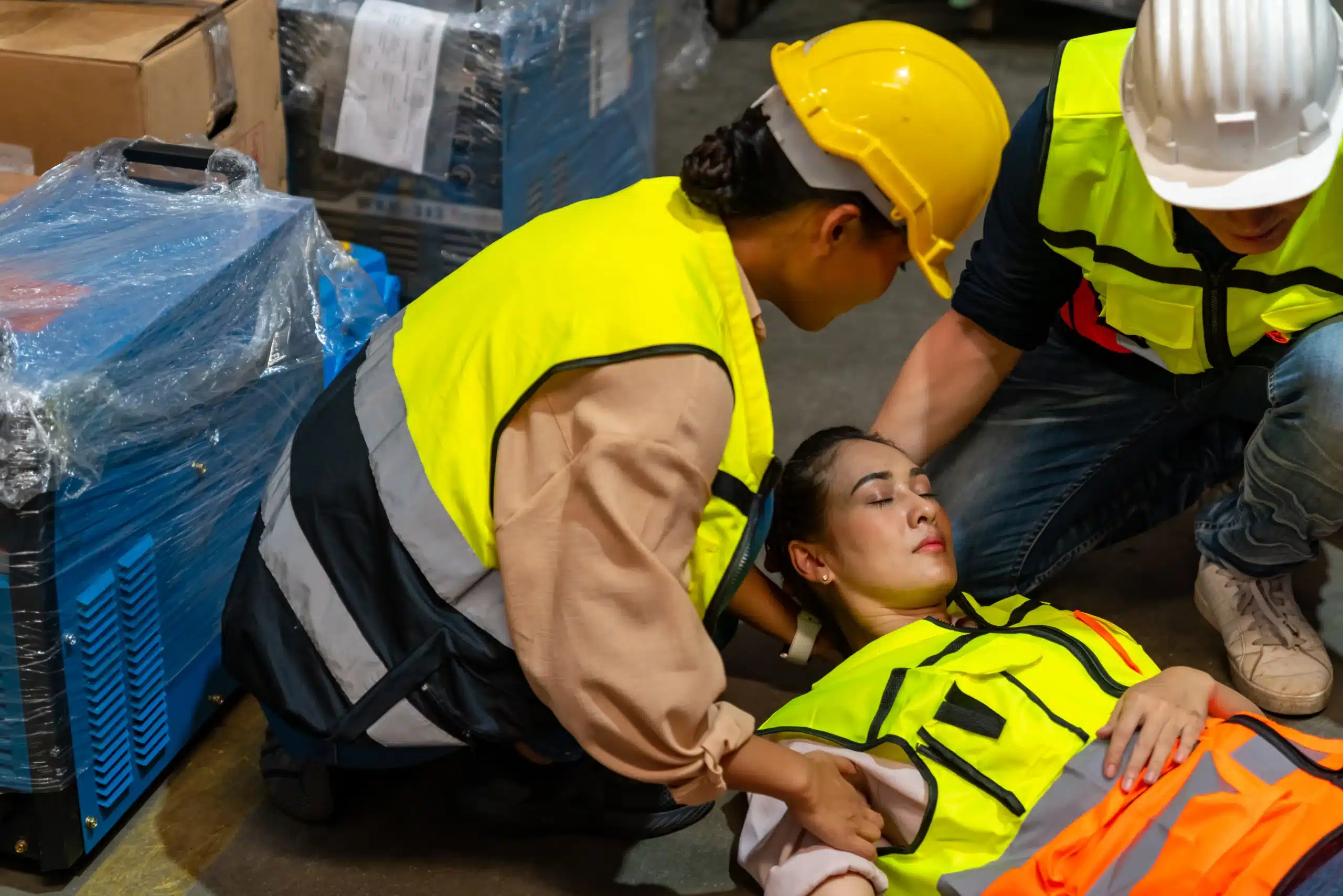Emergencies can happen anytime, anywhere. Knowing how to respond effectively can make all the difference. CPR training equips you with the skills and confidence to assist someone experiencing a medical crisis, potentially saving their life. This guide explores the world of CPR courses in Berkeley, offering a comprehensive overview of the various training options available. We’ll cover everything from basic CPR and First Aid to advanced certifications like BLS and ACLS, helping you choose the right course to match your personal or professional needs. Whether you’re looking for CPR courses in Berkeley for yourself, your family, or your workplace, this guide will provide valuable insights and resources to get you started.
Key Takeaways
- Find the right CPR class for you: Berkeley offers a variety of CPR courses, from basic community training to advanced professional certifications like BLS and ACLS. Explore options, compare prices, and choose a format—in-person, blended, or online—that suits your schedule and learning style.
- Hands-on practice builds confidence: While online resources can supplement your learning, practical training with a certified instructor is essential for mastering CPR techniques and responding effectively in real-life emergencies.
- CPR certification benefits you and your community: Equipping yourself with life-saving skills not only prepares you for unexpected situations but also contributes to a safer environment for everyone. Remember to renew your certification regularly to maintain your skills and confidence.
What is CPR? Berkeley Courses Explained
Cardiopulmonary resuscitation (CPR) is a lifesaving technique used when someone’s breathing or heartbeat has stopped, perhaps due to a heart attack, drowning, or another medical crisis. CPR involves chest compressions and rescue breaths to maintain blood flow and oxygen to vital organs. Learning CPR empowers you to respond effectively in these critical situations and potentially save a life.
CPR courses in Berkeley cater to various needs and skill levels, from basic CPR for the community to advanced certifications for healthcare providers. Berkeley CPR Classes offers a range of American Heart Association (AHA) certified courses, including BLS (Basic Life Support), ACLS (Advanced Cardiovascular Life Support), and PALS (Pediatric Advanced Life Support), equipping participants with essential skills for medical emergencies. Many courses also incorporate First Aid training for a well-rounded approach to emergency preparedness. For more information, explore the Berkeley CPR Classes website, which also details discount group classes for businesses, community groups, and families.
CPR Course Types in Berkeley
Finding the right CPR course can feel overwhelming with so many options. This guide breaks down the different types of CPR training available in Berkeley to help you choose the best fit.
CPR for Everyone
CPR training is for everyone. Learning CPR empowers you to respond effectively during emergencies and potentially save a life. Whether you’re a parent, teacher, or simply want to be prepared, a basic CPR and First Aid course provides the foundational skills you need. These courses cover essential techniques for adults, children, and infants, including recognizing the signs of cardiac arrest, performing chest compressions, and providing rescue breaths. Find a course in Berkeley that fits your schedule and learning style.
CPR for Healthcare Providers
Healthcare professionals require a more advanced level of CPR training to meet the demands of their roles. Berkeley offers various CPR classes, from basic to advanced certifications. Berkeley CPR Classes offers a wide range of American Heart Association (AHA) certified courses, covering everything from basic CPR and First Aid to advanced certifications like BLS, ACLS, and PALS. These courses explore the science behind resuscitation and equip healthcare providers with the skills to manage various life-threatening situations.
Pediatric CPR & First Aid
For those working with children, such as childcare providers, teachers, and parents, Pediatric CPR and First Aid training is crucial. These specialized courses focus on the unique needs of infants and children, addressing age-specific resuscitation techniques and common childhood emergencies like choking and allergic reactions. Knowing how to respond quickly and confidently can significantly impact a child’s outcome.
Specialized CPR (AED, BLS, ACLS)
Beyond basic and pediatric CPR, specialized courses are designed for specific situations and professional requirements. These include training on using an Automated External Defibrillator (AED), Basic Life Support (BLS), and Advanced Cardiovascular Life Support (ACLS). Berkeley CPR Classes offers various AHA-certified courses, including HeartCode BLS. These certifications are often required for healthcare professionals, first responders, and those working in high-risk environments. Understanding the different levels of CPR training and their applications will help you choose the most appropriate course.
CPR Training: Cost & Value
Getting CPR certified is an investment in yourself and your community. But how much does CPR training in Berkeley actually cost, and what factors influence the price? Let’s break down the costs associated with CPR certification and explore how to find the best value.
Typical Course Prices
CPR course fees in Berkeley vary depending on the type of certification, the course format (in-person, blended, or online), and the training provider. You can generally expect to find CPR courses ranging from around $50 to $100. More specialized certifications, such as ACLS (Advanced Cardiovascular Life Support) or PALS (Pediatric Advanced Life Support), typically have a higher price tag due to the advanced material.
What Affects CPR Costs?
Several factors contribute to the overall cost of a CPR course. The course format plays a significant role. In-person classes often cost more due to the overhead of classroom space, equipment, and instructor time. Blended learning courses, which combine online learning with in-person skills practice, may fall somewhere in the middle. Online CPR courses are often the most affordable option. The type of certification also matters. Basic CPR courses are generally less expensive than specialized certifications like BLS for healthcare providers. Location and the training provider can also influence pricing.
Group Discounts & Deals
If you’re getting certified with a group, explore group discounts. Many CPR training providers, including Berkeley CPR Classes, offer reduced rates for group bookings. This can be a great way to save money while learning valuable lifesaving skills together.
Finding the Lowest Price
While cost is a factor, the value of CPR training goes beyond the price tag. Look for a reputable training provider that offers high-quality instruction, convenient scheduling, and a comfortable learning environment. Berkeley CPR Classes offers a low-price guarantee, ensuring you receive excellent training at a competitive price. Compare prices and course formats from different providers to find the best fit for your needs and budget.
CPR Course Length & Format
Figuring out which CPR course is right for you involves understanding the time commitment. Let’s break down the typical lengths and formats for CPR training.
In-Person CPR Training
In-person CPR training offers a hands-on learning experience with direct feedback from a certified instructor. These courses typically run between two and four hours, depending on the specific course level and the organization providing the training. The benefit of this format is the immediate feedback and opportunity to practice your skills in a real-time setting.
Blended Learning CPR
Blended learning CPR courses combine online learning with hands-on practice. You’ll complete the online portion at your own pace, which usually takes around two to three hours. This is followed by a shorter in-person skills session, typically lasting one to two hours. Programs like HeartCode BLS offer this blended approach, giving you flexibility while ensuring you get the necessary practical experience.
Online CPR: Pros & Cons
Online CPR training provides ultimate convenience, allowing you to learn at your own speed. These courses generally take between one and three hours to complete. The main advantage is flexibility, fitting easily into busy schedules. However, while online courses offer valuable theoretical knowledge, they often require a separate in-person skills assessment to demonstrate competency. This additional skills check can range from 30 minutes to an hour. It’s important to weigh the pros and cons of online-only versus blended or in-person training to ensure you get the right balance of knowledge and practical skills.
CPR Certification & Renewal
Getting CPR certified is an investment in yourself and your community. With different certifying organizations and varying renewal timelines, understanding the process is important. This section clarifies CPR certification and renewal in Berkeley.
American Heart Association Certification
Berkeley CPR Classes offers a variety of American Heart Association (AHA) certified courses. The AHA is a leading authority in CPR training, and their certification is widely recognized. Choosing an AHA-certified course ensures high-quality training based on the latest science. These courses cover everything from basic life support (BLS) for healthcare providers to CPR and AED training for the public. You’ll receive an official certification card, valid for two years, after successfully completing an AHA course.
Red Cross Certification
The American Red Cross also offers CPR certification with various courses, including adult, child, and infant CPR and AED training. Like AHA certifications, Red Cross certifications are generally valid for two years. Consider your specific needs and any workplace preferences when choosing between AHA and Red Cross certification.
Renewing Your CPR Certification
CPR guidelines and best practices are constantly evolving, so renewing your CPR certification every two years is essential. Renewal courses are shorter than initial certification courses, focusing on refreshing your skills. Berkeley CPR Classes offers renewal courses for both AHA and Red Cross certifications. Timely renewal ensures you’re always prepared to respond effectively in an emergency.
Find CPR Courses in Berkeley
Finding the right CPR class in Berkeley depends on your specific needs and schedule. Luckily, several excellent options are available, from established organizations to community-based programs. Here’s a rundown of where you can find CPR training in Berkeley:
Berkeley CPR Classes
Berkeley CPR Classes offers a comprehensive range of American Heart Association certification courses right here in town. They cover everything from basic CPR and first aid to advanced certifications like BLS and ACLS. Known for their commitment to customer service, they also have a low price guarantee. They offer discounts for group classes, perfect for workplaces or community groups. Visit their website to view the course schedule and learn more about their RQI courses.
American Red Cross
The American Red Cross is a trusted name in CPR training, offering courses in Berkeley. You can find classes covering adult, child, and infant CPR and first aid, often with online and in-person options. While CPR certifications are typically valid for two years, the Red Cross recommends refreshing your skills regularly. Explore their course catalog and find a class near you.
UC Berkeley Recreation & Wellness
If you’re a student or affiliated with UC Berkeley, their Recreation & Wellness program might be a convenient option. They offer various health and safety courses, including CPR/AED training at different skill levels, from beginner courses to professional certifications. Check their website for course schedules and registration information, as many courses require pre-registration.
Local Hospitals & Community Centers
Many local hospitals and community centers in Berkeley also offer CPR and first aid classes. These can be a great way to learn these essential skills within your community. Check with hospitals like Alta Bates Summit Medical Center and Kaiser Permanente, as well as community centers like the Berkeley YMCA and the Jewish Community Center of the East Bay, for their course offerings. You can often find affordable options and flexible schedules. Bay Area CPR is another helpful resource for CPR classes in the area.
Choose the Right CPR Course
Finding the right CPR course depends on your needs and goals. Are you looking to gain confidence for everyday emergencies, or do you need certification for your job? Thinking about these questions will help you choose the best fit.
Your CPR Needs: Personal vs. Professional
CPR training is valuable for everyone. If you’re a parent, caregiver, or simply want to be prepared for unexpected situations, a basic CPR and First Aid course will equip you with life-saving skills. These courses cover essential techniques for responding to common emergencies like choking or cardiac arrest. For healthcare professionals, teachers, or those working in childcare, a more advanced certification like BLS, ACLS, or PALS is usually required. These certifications cover more in-depth life support techniques for those who may encounter medical emergencies more frequently. If you’re looking for convenient online learning combined with hands-on practice, consider exploring HeartCode BLS.
Comparing CPR Classes
Berkeley offers a variety of CPR classes to meet different needs. From basic life support to advanced certifications, you can find a course that aligns with your goals. Berkeley CPR Classes offers a range of American Heart Association (AHA) certified courses—from basic CPR and First Aid to advanced certifications. When comparing classes, consider the course content, the certifying organization (AHA or Red Cross), and the course format (in-person, blended, or online). Think about what works best with your schedule and learning style. If you’re unsure which course is right for you, contact a training provider—they can help you choose. You can also explore options for group discounts if you’re planning to train with friends, family, or colleagues.
Hands-On CPR Training: Why It Matters
While online CPR courses offer a convenient way to learn the material, hands-on training is crucial for mastering the techniques. In-person CPR classes provide the opportunity to practice skills under the guidance of a certified instructor. This practical experience builds confidence, ensuring you can perform CPR effectively in a real emergency. Many certifying organizations, including the AHA, require a hands-on skills assessment with an instructor for valid certification. Even if you choose blended learning, the hands-on component is essential for demonstrating competency and receiving your certification. This combination of knowledge and practical skills prepares you to respond confidently and effectively in a life-saving situation.
CPR Training Myths Debunked
Let’s clear up some common misconceptions about CPR training. Understanding these points will help you choose the right course and prepare for a real-life emergency.
Is Online-Only CPR Enough?
While online CPR courses offer a convenient way to learn the basics, they typically don’t meet requirements for professional certification. Many organizations, especially in healthcare, require hands-on training and an in-person evaluation. A completely online CPR certification might not be valid for your workplace and could be a waste of money. Check with your employer or regulatory body to confirm what type of training they accept.
How Often Should You Refresh CPR Skills?
CPR certifications are typically valid for two years. However, research suggests that your CPR skills can decline within months of initial training. The Red Cross Scientific Advisory Council recommends regular practice to maintain proficiency. Consider refreshing your skills annually or even more frequently to stay sharp and confident in your abilities.
Can You Do CPR Without Certification?
Absolutely. In a real emergency, any attempt at CPR is better than none. If you encounter someone who needs CPR and your certification has lapsed, don’t hesitate. Call 911 and begin CPR. The American Red Cross emphasizes the importance of acting quickly, even without formal certification.
Does CPR Always Work?
It’s important to have realistic expectations about CPR. While it can significantly increase someone’s chances of survival, CPR doesn’t always have a positive outcome. Many factors influence the effectiveness of CPR, including the nature of the emergency and the time it takes for professional help to arrive. However, CPR training remains a crucial part of community safety and empowers individuals to provide immediate assistance when it matters most.
Why Get CPR Certified in Berkeley?
Getting CPR certified isn’t just about checking a box; it’s about equipping yourself with the skills and confidence to make a real difference. Whether you live, work, or frequently visit Berkeley, understanding CPR can have a profound impact on you and the community.
Save Lives & Gain Confidence
CPR training empowers you to respond effectively during emergencies. Learning CPR gives you the skills to assist someone experiencing cardiac arrest, increasing their chances of survival. It’s applicable to various situations, from helping a stranger in a public space to protecting loved ones at home. Find a CPR course in Berkeley that fits your needs, whether you’re looking for basic life support or advanced certification. Most courses, including those from Berkeley CPR Classes, lead to an official American Heart Association certification card, valid for two years, giving you the confidence to act when needed.
Advance Your Career with CPR
In many professions, CPR certification is a requirement or a significant advantage. CPR training in Berkeley ranges from basic to advanced certifications, catering to diverse career paths. Healthcare professionals, childcare providers, teachers, coaches, and even those in construction or other fields benefit from this valuable skill. Berkeley CPR Classes offers a wide selection of American Heart Association (AHA) certified courses, from basic CPR and First Aid to advanced certifications like BLS, ACLS, and PALS. A current CPR certification demonstrates your commitment to safety and preparedness, making you a stronger candidate for many jobs.
Make Your Community Safer
CPR and first-aid training are vital for community safety. By becoming certified, you contribute to a network of prepared individuals ready to respond to emergencies. CPR and first-aid classes in Berkeley cater to a wide range of individuals, reflecting the community’s dedication to safety and preparedness. The more people trained in CPR, the higher the likelihood of positive outcomes during emergencies. Easy access to these CPR classes in Berkeley makes it simple to gain these life-saving skills and contribute to a safer environment for everyone.
Get Ready for Your CPR Class
So, you’ve decided to take a CPR class—fantastic! Knowing what to expect and how to prepare can make your learning experience even better. This section covers everything you need to know before your first class, from what to bring to how to get a head start on the material.
What to Expect & What to Bring
CPR classes are designed to be interactive and engaging. You’ll learn through a combination of instruction, demonstrations, and hands-on practice. Expect to participate actively in scenarios and simulations, working with mannequins to perform chest compressions, rescue breaths, and other essential techniques. Your instructor will guide you through each step, providing feedback and answering any questions. Berkeley CPR Classes offers various course formats, including in-person and blended learning.
Wondering what to bring? Keep it simple. Comfortable clothing is key, as you’ll be moving around and kneeling on the floor. Bring a notebook and pen to jot down notes, though many courses provide materials. Check with Berkeley CPR Classes about specific requirements for your chosen course. They offer a low price guarantee and group discounts, making their courses accessible to everyone.
Study Before Your CPR Class
Want to get a head start? While not required, reviewing some basic CPR information beforehand can be helpful. Familiarizing yourself with the core concepts will allow you to focus on mastering the practical skills during class. Online resources and pre-study materials can offer a preview of topics covered in your course. This can be especially beneficial for courses like BLS and ACLS.
Physical Requirements for CPR
CPR involves physical exertion, primarily using your upper body strength to perform chest compressions. While you don’t need to be an athlete, a reasonable level of fitness is helpful. If you have any physical limitations or concerns, discuss them with your instructor before the class begins. They can offer modifications or alternative techniques to ensure you can participate fully and safely. For example, the HeartCode BLS course offers a flexible format that blends online learning with hands-on practice, allowing you to learn at your own pace before demonstrating your skills in person. Consider exploring RQI classes as well.
Related Articles
- Life-Saving Workplace CPR and First-aid Training Benefits
- BLS Renewal in Berkeley: Your Go-To Guide – Berkeley CPR Classes
- Why CPR is Vital in Healthcare
- CPR Myths You Need to Stop Believing – Berkeley CPR Classes
- The Science Behind Effective CPR – Berkeley CPR Classes
Frequently Asked Questions
What’s the difference between CPR and First Aid?
CPR focuses specifically on restoring breathing and circulation when someone’s heart has stopped. First Aid covers a broader range of emergency situations, from minor cuts and burns to more serious injuries like fractures and allergic reactions. Often, CPR and First Aid training are combined into one course.
Which CPR certification is right for me?
The best CPR certification depends on your individual needs. A basic CPR and First Aid course is great for anyone wanting general knowledge and preparedness. Healthcare providers, educators, and those working with children typically need more advanced certifications like BLS, ACLS, or PALS. Consider your current job, future career goals, and personal circumstances when choosing.
How long does CPR certification last, and how do I renew it?
CPR certifications are typically valid for two years. It’s important to renew your certification before it expires to stay up-to-date on the latest guidelines and maintain your skills. Renewal courses are usually shorter than the initial certification course and focus on refreshing your knowledge and technique.
I’m nervous about the hands-on part of the class. What if I mess up?
It’s completely normal to feel a little apprehensive about the hands-on portion, but CPR instructors create a supportive learning environment. They’ll guide you through each step, provide constructive feedback, and offer plenty of opportunities to practice. The goal is to build your confidence so you can act effectively in a real emergency.
What if I have physical limitations? Can I still learn CPR?
Yes, you can still learn CPR even with physical limitations. Talk to your instructor beforehand about any concerns you have. They can often adapt techniques or offer modifications to help you participate fully and safely. There are also different course formats, like blended learning, that might be more comfortable for you.


